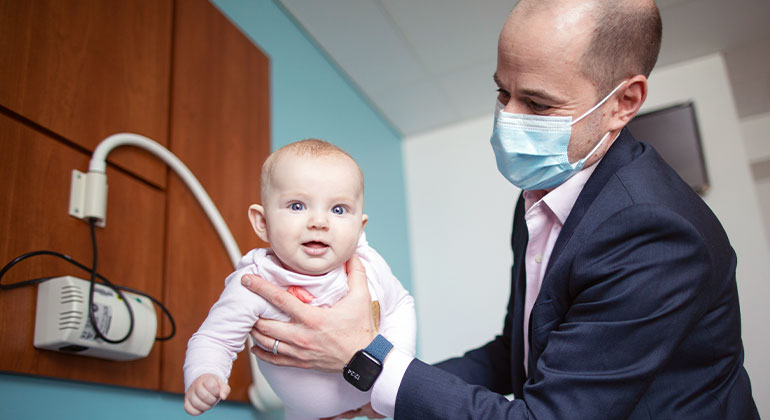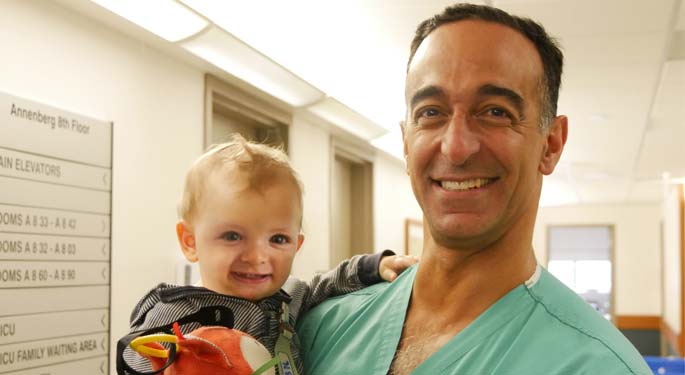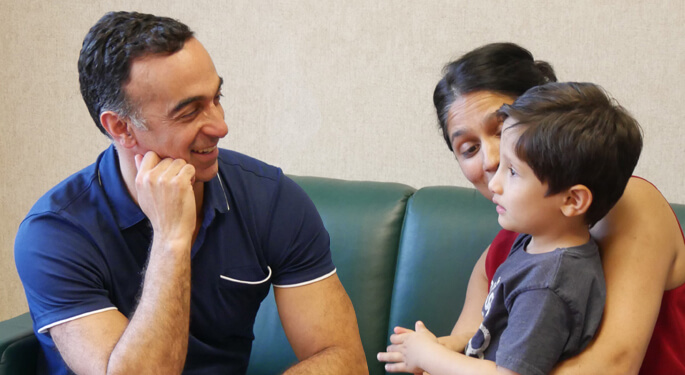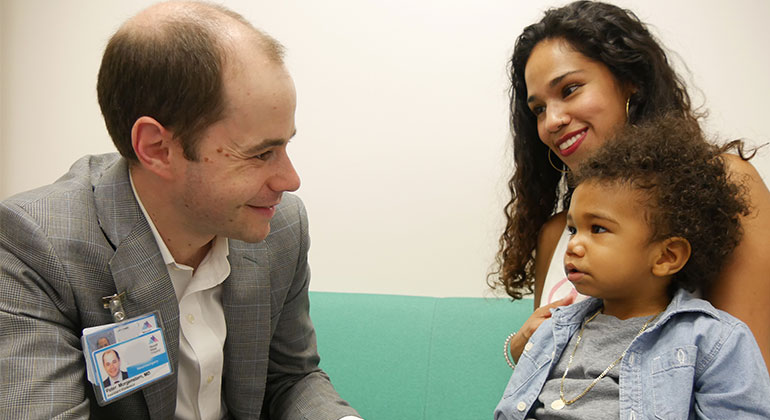Pediatric Neurosurgery





"We have a fantastic neurosurgery and pediatric program with all the infrastructure in place to treat the most complex brain tumors and disorders in children," said Saadi Ghatan, MD, Director of the Pediatric Neurosurgery Program, who has more than 20 years of experience in pediatric neurosurgery.
Mount Sinai's Pediatric Neurosurgery Program is a premier destination for managing and treating a variety of pediatric disorders, malformations, and brain tumors. We offer access to top neurosurgeons as well as support services such as speech and physical therapy, child life specialists, social workers, and a dedicated pediatric intensive care unit. We offer access to top neurosurgeons as well as support services such as speech and physical therapy, child life specialists, social workers, and a dedicated pediatric intensive care unit.
What We Treat
From infants to young adults, our neurosurgeons are committed to working with families to produce the best possible outcomes for your children. Our specialists treat the full spectrum of pediatric neurological disorders, including:
- Arteriovenous malformations (AVM) are tangles of abnormal blood vessels that mostly affect the brain and are often present at birth (congenital). We think it happens during the first trimester of pregnancy. Our multidisciplinary team of neurologists, neurosurgeons, vascular specialists, and pediatricians work together to remove the tangled vessels with a minimally invasive procedure. If the AVM is located deep in the brain, stereotactic radiation can prevent future hemorrhage.
- Chiari malformations are present at birth and can put pressure on the brainstem, potentially affecting brain function and leading to hydrocephalus. When this malformation causes problems, we can remove the bone that is compressing the brain with a minimally invasive surgery that corrects the problem and has a quick recovery time.
- Dystonia, is caused by a genetic abnormality or injury, results in twisted arms and legs and painful muscle contractions, mostly in the foot or hands. We offer deep brain stimulation and intrathecal pump therapy for children with secondary dystonia.
- Pediatric brain tumors include both benign and malignant conditions. We treat complex cases such as ependymomas, juvenile pilocytic astricytomas, medulloblastomas, and pontine glioma.
- Pediatric epilepsy is a condition that we treat with medication and, if that does not work, with surgery.
- Pediatric spinal cord tumors, the third most common solid tumors in children, can press against the spinal cord and critical functions of the central nervous system, causing back pain, difficulty walking, or weakness in the legs. We typically treat these tumors with a combination of chemotherapy, radiation treatment, and surgery.
- Spasticity causes involuntary muscle spasms and tightness and often appears in children with cerebral palsy or brain injury. At Mount Sinai, our team of experts in neurosurgery, neurology, orthopedics, and physical therapy collaborate to provide personalized treatment plans, which may include pump therapy.
- Syringomyelia happens when cerebrospinal fluid collects in the spinal cord, damaging the cord.
- Tethered spinal cords, which occur when the spine does not move freely, can disrupt blood flow and lead to muscle weakness, back pain, difficulty walking, and bowel and bladder dysfunction. Our multidisciplinary team creates personalized treatment plans that may include untethering surgery.
- Congenital and developmental disorders include pediatric hydrocephalus, an abnormality of the normal flow of fluid in and around the brain, and spina bifida, when the backbone and spinal canal do not close before birth
- Craniofacial conditions can affect the shape and development of a child’s head and face during the first year of life. The most common of these disorders are coronal synostosis, which leads to head and facial asymmetry; metopic synostosis, which causes a triangular forehead; and sagittal synostosis, which causes the head to become long and narrow. We use a minimally invasive procedure to treat the condition.
Our care team specializes in working with children and has developed treatments that are appropriate and safe for young patients. We are also careful to prevent hydrocephalus after surgery as well as to treat children who come in with that condition.
"We have the expertise and technology, such as frameless navigation systems and brain mapping techniques, to treat the most difficult areas of the brain in children," said Dr. Ghatan.
In addition to advanced treatment options, our pediatric neurosurgery program collaborates with the neurosciences program, which conducts laboratory research to develop new therapies for children.
Treatments Available
Our neurosurgical care team tailors the latest therapies to make them safer for children of all ages, from infants to young adults. We take special precautions to prevent hydrocephalus, which occurs when there is too much fluid in the brain after surgery.
Some of the advanced therapies we deliver are:
- Brain mapping three-dimensional imaging techniques help our neurosurgeons find the location of a tumor, lesion, or area of the brain responsible for pediatric epilepsy before surgery. These techniques are very accurate and help us protect the parts of the brain that are responsible for vital functions. We use brain mapping during surgery. We place electrodes on the surface of the skin and apply tiny electrical impulses to monitor the brain throughout the procedure.
- Craniotomy is a traditional procedure where we open the patient’s skull. Depending on the location and size of the tumor, we may use this technique to remove a tumor, obtain a biopsy, or treat a blood clot or hydrocephalus. We use intraoperative monitoring and neuronavigation devices to pinpoint the exact location of the tumor (or lesion) and the best surgical trajectory for safe removal.
- Endoscopic surgery is a minimally invasive treatment that allows us to remove tumors or lesions without traditional surgery, which can prolong recovery times. We use a tiny instrument called an endoscope (a long flexible tube with a light and video camera) that we insert through the nose or ears to remove the tumor or lesion. We work with amultidisciplinary team of neurosurgeons and ear, nose, and throat surgeons.
- Pump implantation is appropriate for children with severe spasticity. We implant a pump, also called a pain pump, under the skin. This device provides a high concentration of bacolfen, an antispasticity muscle relaxant, directly into the spinal cord, in tiny doses. The medication relieves long-term pain without the side effects of oral medication and helps children get back to their daily routines quicker.
- Radiosurgery helps us treat tumors that are located near critical structures of the brain without surgery. Using highly sophisticated beams of technology, our pediatric neurosurgeons target tumors deep in the brain without the risk of affecting vital brain areas. We usually use radiosurgery to treat arteriovenous malformations of the brain and spine, medulloblastomas, and other common brain tumors.
Meet our Faculty
Saadi Ghatan, MD
Site Chair of Neurosurgery at Mount Sinai West and Mount Sinai Morningside
Director, Pediatric Neurosurgery at Mount Sinai Health System
Alejandro Berenstein, MD
Director, Pediatric Cerebrovascular Program
Peter F. Morgenstern, MD
Assistant Professor, Departments of Neurosurgery & Pediatrics
Margaret E. Pain, MD
Assistant Professor, Department of Neurosurgery